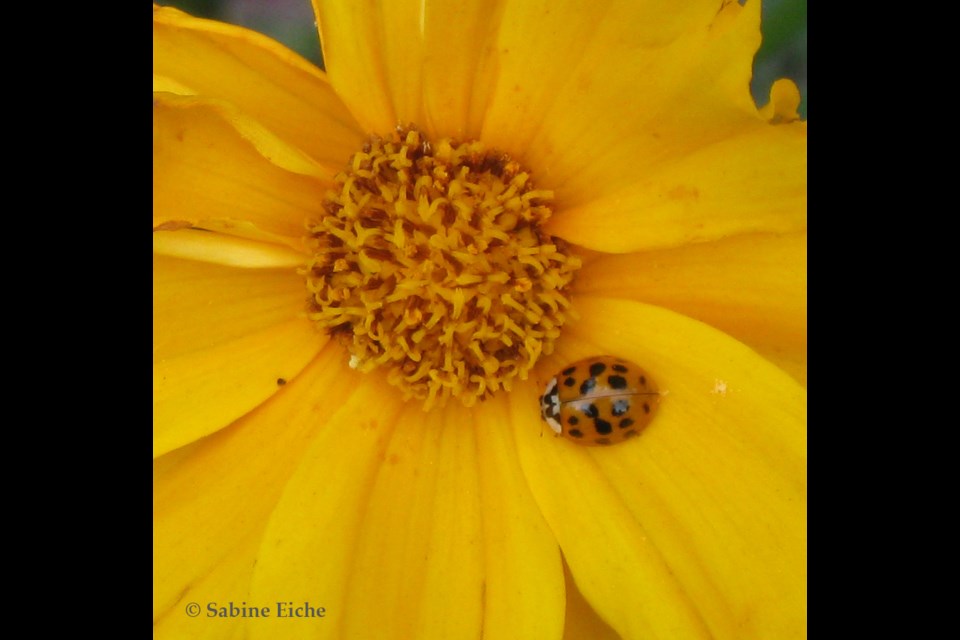Just because I don’t like aphids doesn’t mean they’re no good. It took me years to get over my antipathy towards them, and now, even if I don’t exactly warm to them, I look on aphids as serving a positive purpose.
These tiny bugs live between seven to 40 days (unless they’re eaten first). A week-old female can produce 12 offspring per day and doesn’t need a male to fertilize the eggs. When their host plant becomes overcrowded, aphids develop wings and move on.
Among their many predators are ladybugs, who came to my garden in great numbers this spring. Lots of mating ensued. Now there are ladybug larvae crawling everywhere, seeking food and a spot to pupate. The flowering parsley, growing abundantly in my garden, is a favourite location.
But so is the lid of my green bin. Perhaps they think it’s a huge green leaf. I spend considerable time rescuing both adults and larvae from the lid. They crawl onto my finger, and then I have to transfer them to a leafy plant very quickly before they make their way up my sleeve.
Occasionally I witness something that tugs at my heartstrings, as happened the time a ladybug with a malformed elytron (wing case; plural, elytra) was running on the green bin lid with another ladybug racing towards it. A collision seemed inevitable, but they gave each other a wide berth and ran on. I became worried that the handicapped ladybug was going to starve. It appeared unable to fly and there was nothing to eat on the lid. So I let it crawl on to my finger and carried it to the calendulas – the ladybug equivalent of Costco as far as aphids go.
I scraped some aphids on to a leaf and tried to interest the ladybug in this delicacy, but it wasn’t tempted. I’d managed to get a few squished aphids on my hand, which I then offered. The ladybug calmly sat on my hand and ate them. When that morsel was all gone, I put the aphid-laden leaf down on a stone near the calendula patch, and nudged the ladybug on to it. Its appetite had returned. It licked the leaf clean.
Night was falling, and to make sure it had enough food, I cut off a calendula whose stem was black with aphids and placed it on the stone next to the leaf. In the morning the calendula was lying where I’d left it – and not an aphid in sight. The ladybug, too, was nowhere to be seen. I figured either a miracle had occurred and it had managed to fly away, or it had become so well fed that it rolled from the stone onto the mulch covering the calendula patch and was now sleeping it off.
My advice – don’t kill every aphid. Remember that your garden isn’t for you alone, it’s for the benefit of all nature. Please let the ladybugs, lacewings, hover flies and soldier beetles find a well-stocked aphid-larder in your garden.
Sabine Eiche is a local writer and art historian with a PhD from Princeton University. She is passionately involved in preserving the environment and protecting nature. Her columns deal with a broad range of topics and often include the history (etymology) of words in order to shed extra light on the subject.



